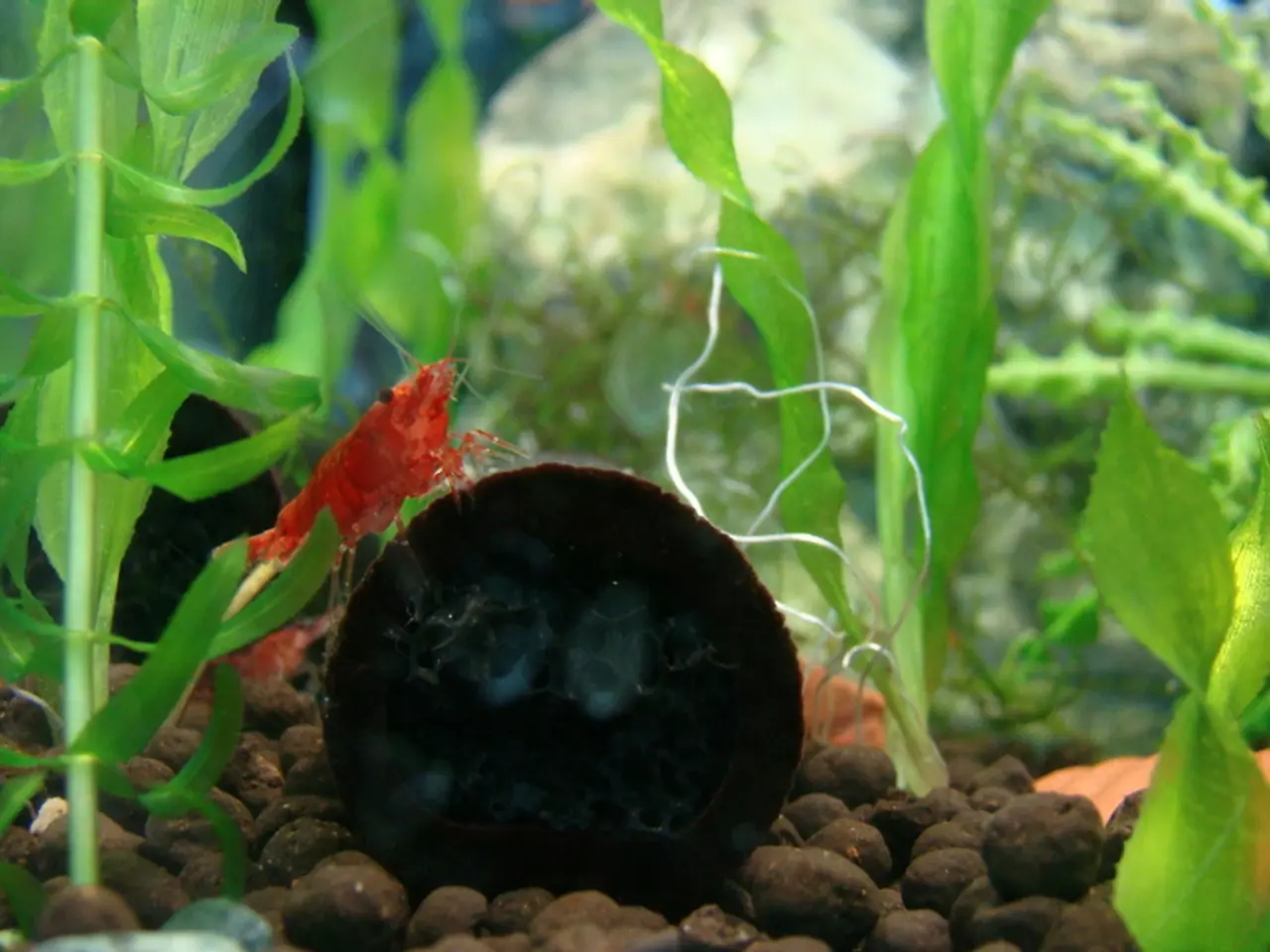Active Terrarium Inhabitants: Isopods and Springtails in a Combined Bioactive Setup - Guide 101
In the world of terrariums and vivariums, maintaining a clean and healthy environment is crucial for the well-being of your pets and plants. One key solution lies in the use of isopods and springtails, two species that work together to create a self-sustaining ecosystem. Here's a guide on how to effectively incorporate these microfauna into your bioactive setup.
Firstly, it's essential to introduce the cleanup crew at the right time. Ideally, they should be introduced 2-4 weeks before the primary inhabitants to allow populations to establish and the substrate to condition, leading to a stable environment. Start with about 50% of the intended population initially, allowing colonies to grow naturally as waste increases from inhabitants. Introduce springtails first as they establish faster, control mold early, and prepare the substrate, followed by isopods [1].
When it comes to population sizing and species mix, initial recommendations based on enclosure size are as follows: a 10-gallon enclosure requires 10-20 isopods and 50+ springtails, a 20-gallon enclosure needs 20-30 isopods and 100+ springtails, and a 40+ gallon enclosure requires 30-50 isopods and 200+ springtails [1]. Using species that complement each other, such as prolific breeders like Dairy Cow isopods, ensures redundancy and improves resilience against environmental changes. Combining Dairy Cow isopods with springtails is commonly recommended for efficient cleaning and ecosystem health [2][4].
Preparing the ideal substrate is another crucial factor. A bioactive substrate mix that supports microorganisms and cleanup crews should include organic topsoil for structure, coconut coir for moisture retention, Sphagnum moss to create humid zones, leaf litter for food source, calcium sources (e.g., crushed shells) to support isopod molting, and a drainage layer with clay balls or gravel to prevent waterlogging [1]. Seeding substrate with small amounts of established vivarium substrate introduces beneficial bacteria and fungi that accelerate decomposition processes [1].
Maintaining the right environmental conditions is also vital. Both isopods and springtails thrive in moist environments, but avoid direct strong light which can desiccate them. Keep temperature according to species needs; for example, temperate white springtails (Folsomia candida) tolerate cooler temperatures, useful in non-tropical setups [1]. Provide ample leaf litter and wood pieces as food and habitat for isopods like Trachelipus trilobatus.
Regular maintenance and care are necessary to ensure the continued effectiveness of your bioactive cleanup crew. Avoid disturbing them frequently to allow natural population growth and ecosystem balance. Monitor humidity and substrate moisture to keep conditions ideal. Regularly check that the substrate is neither too wet nor dry to prevent die-offs. Partial feeding of vegetable scraps or detritus can supplement their diet if natural waste is limited, especially in enclosures without many decomposable residues.
By following these practices, you'll ensure a robust, self-sustaining population of isopods and springtails that efficiently break down waste, control mold, and promote a healthy, low-maintenance bioactive terrarium or vivarium ecosystem [1][4][5].
References: [1] "Bioactive Isopods and Springtails: A Comprehensive Guide" by Reptile Mag (URL: https://www.reptilemag.com/bioactive-isopods-and-springtails-a-comprehensive-guide/) [2] "Springtails: The Ultimate Clean-Up Crew" by Reptiles Magazine (URL: https://www.reptilesmagazine.com/reptiles/invertebrates/springtails-the-ultimate-clean-up-crew/) [3] "Isopods: The Ultimate Clean-Up Crew" by Reptiles Magazine (URL: https://www.reptilesmagazine.com/reptiles/invertebrates/isopods-the-ultimate-clean-up-crew/) [4] "Bioactive Isopods and Springtails: A Practical Guide" by The Reptile Report (URL: https://www.thereptilereport.com/articles/bioactive-isopods-and-springtails-a-practical-guide/) [5] "The Benefits of Using Isopods and Springtails in Bioactive Setups" by The Reptile Room (URL: https://www.thereptileroom.com/articles/the-benefits-of-using-isopods-and-springtails-in-bioactive-setups/)
- In the realm of science, environmental-science specifically, maintaining self-sustaining ecosystems in terrariums and vivariums is a topic of interest, with the implementation of species like isopods and springtails playing a significant role.
- Climate-change discussions often highlight the importance of a healthy environment, which extends to the microfauna community in terrariums, where isopods and springtails work together to control waste and mold.
- In the lifestyle section of contemporary magazines, articles on DIY projects may include guidance on setting up a low-maintenance bioactive terrarium, incorporating isopods and springtails, and creating a thriving ecosystem.
- The fashion-and-beauty industry could possibly embrace the biotope concept in a unique way, using bioactive terrariums as a living, breathing form of artwork or installation, showcasing a harmonious blend of organisms like isopods and springtails.
- When it comes to Schlieren cuisine, possibly the next frontier in food-and-drink trends, restaurants may incorporate bioactive terrariums in their decor, featuring local or exotic isopod species, promoting sustainable dining experiences.
- In the realm of travel and exploration, eco-tourists may take an interest in discovering new species of isopods and springtails in various climates and environments, contributing to both environmental-science research and sustainability efforts in the home-and-garden industry, particularly those focusing on car models that prioritize fuel efficiency for reduced carbon footprints, and "green shopping" movements that support eco-friendly products.




